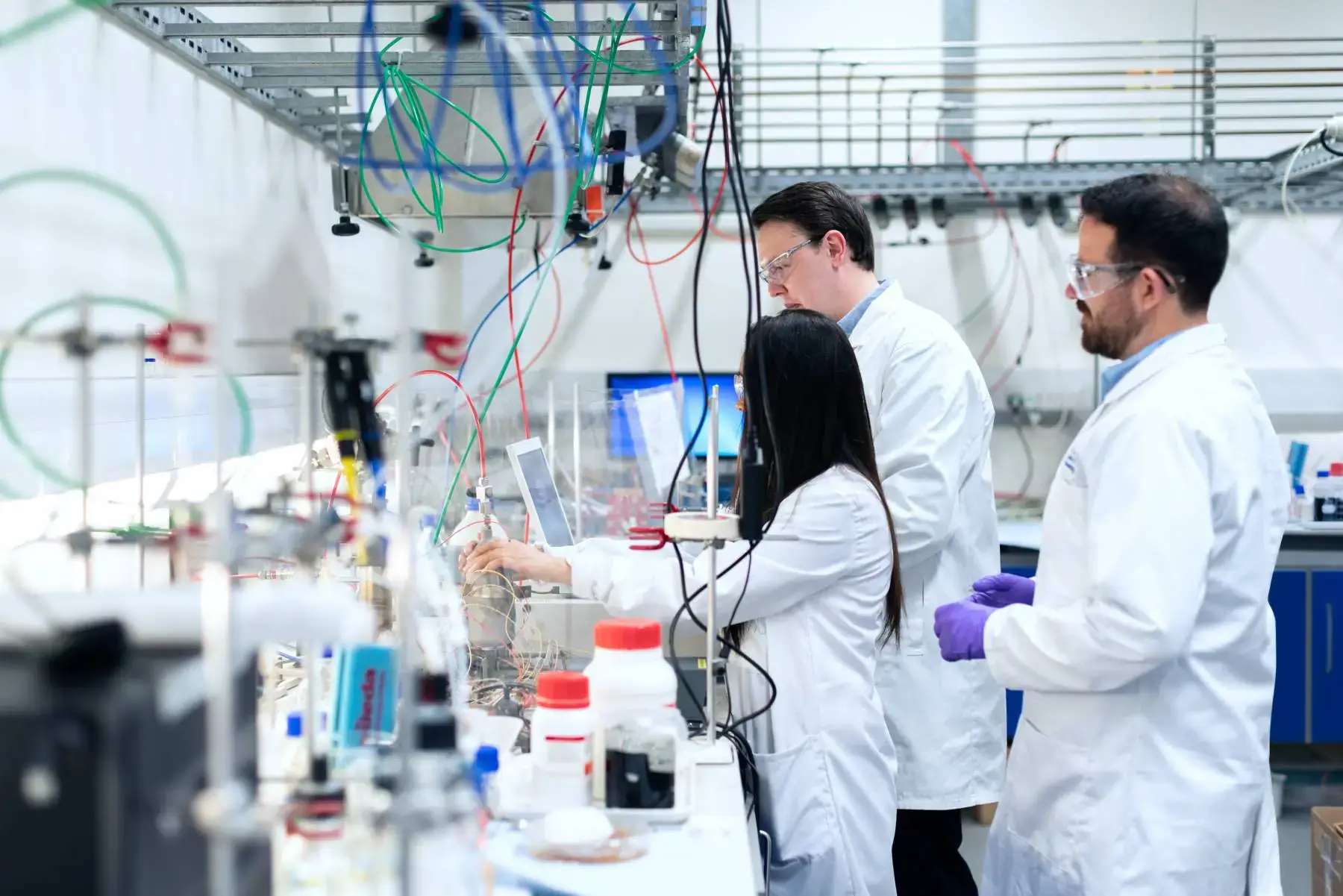A LIMS, or a Laboratory Information Management System, is a software solution built specifically for laboratories of all industries. A LIMS improves a lab’s data quality and overall efficiency by reducing the amount of time required for manual data input, tracking, and operations management. While there are many LIMS options available, this article will focus on 20 lab functions that are most critical to your lab operations and are supported by most leading LIMS platforms such as LABWORKS, a leader in the LIMS market since 1985.
As explained below, the capabilities of a LIMS reach far beyond sample tracking and management. A LIMS improves administrative and operational processes, as well. Invoicing, instrument management, and even personnel management are all part of a robust LIMS and are critical for most industry certifications, such as ISO 17025. If you are new to LIMS, it’s helpful to think of it as a solution for redirecting a lab’s skilled team to the critical tasks that they do best. LIMS solutions accomplish this by minimizing the time required for those tedious but necessary tasks that come with running a successful lab.
Below, learn more about 20 different lab functions that benefit from the increased efficiency and accuracy of a LIMS.
20 Lab Functions a Laboratory Information Management System Can Support
Sample Management
A LIMS manages the entire sample life-cycle from sample creation and login to the final reporting. Benefits include greater throughput, timely and accurate results, facilitated compliance, reduced data entry, improved data quality and integrity, and increased employee and customer satisfaction.
Analysis Management
Similar to Sample Management, LIMS provides many benefits related to analysis management, which helps to ensure samples are within specification. When issues arise, the LIMS can trigger automatic actions or notifications to resolve them. The state of the sample is often dependent on the collective status of all its analyses. Analysis management also includes violation handling, validation, QC batching, and calculations.
Project Management
While many “process” labs are centered around sample and analysis management, many research and development labs are focused on projects, studies, and formulations. Project management helps to organize samples and analyses into meaningful groups for more significant analysis. Essential for R&D labs, LIMS project management improves project execution, communication and cross-collaboration.
Customer or Vendor Management
Most LIMS software facilitates communication and collaboration between the primary lab and any third-party labs involved in outsourced analyses. LIMS software can securely initiate data transfer and data entry for any third-party users, as well as allow results from third-party labs to be automatically loaded into the system, before or after an initial review.
Customer portals allow customers or partners to submit work orders prior to sending samples to the lab for processing. For example, customers can place an order, print labels, and attach labels to samples. The lab is alerted that the samples are in transit and once they arrive, the lab can quickly scan the label/barcode/QR Code to identify and document each sample. The LIMS system may also allow customers to track their order status and receive final results upon completion.
Unique to LABWORKS’ LIMS is a robust customer portal that exists outside the lab’s network firewall. This allows third parties, like customers, partners, or even employees, to submit requests and communicate with the lab without having to be inside the lab’s network. Our portal was originally designed specifically for a large US government agency which prioritized security and ease of implementation and use. Today, the LABWORKS customer portal is the most robust, secure, and easy-to-implement solution in the LIMS industry.
Sample and Task Scheduling
A LIMS allows labs to pre-schedule samples or tasks. When their time arrives, the sample is automatically created in the system informing the lab that the samples need to be collected and received for further processing. This is especially valuable for labs that have samples created at regular intervals. Users can view all pre-scheduled events or tasks at any time, which helps lab teams streamline resource planning and daily task management while reducing time spent on data entry. Key tasks such as instrument maintenance and personnel training can also be scheduled and managed.
Sample Workflow Design and Automation
Automatically updating sample status based on defined criteria creates greater throughput. This automation facilitates hand-offs from one function to another and ensures that samples or other items are processed efficiently.
Unique to LABWORKS’ LIMS software, our Workflow Architect allows users to completely and easily design any workflow to meet their current processes. Workflows can be set at a global level or at the individual sample, analysis, batch, or project level.
Sample Collection
LIMS software can often improve initial data collection in the field, at the plant, or on-site at the lab via a mobile application. Integration with map technology helps define the most efficient collection route thus saving time and resources. Better communication between the field and the lab helps the lab know what has been collected, what is in transit, and if there are any issues with the planned samples. Data collected in the field increases sample quality and acts as quality control, ensuring samples were collected where expected.
Sample Receipt or Login
A LIMS provides greater throughput and efficiency through sample templates that help users know what data is needed and can even load default values for common data elements. This not only reduces data input time but increases data quality and integrity.
Test Result Entry
A key part of a LIMS is the ability to enter and track results. Most LIMS platforms allow for manual or automated entry through integration with various instruments. Most leading LIMS software platforms, like LABWORKS, allow for simple or even complex automatic calculations upon entry. For example, once a result is entered, the LIMS will check to see if a specification is present. If there is and the result is outside of the specification, workflows can be triggered to notify someone or reorder the test on the same sample, reorder a different test on the same sample, reorder a new sample, and so on.
LABWORKS LIMS has a library of over 200 instruments with which it integrates.
Validation and Approval
A LIMS typically provides ways to validate specific results and overall data. A LIMS identifies what needs to be validated, for what reason, and by whom. Multiple layers of validation can be established. By automating the validation process, the LIMS helps to ensure quality and timely results.
Final Reporting
Once validation has occurred, a final report is often generated and sent to a defined recipient list. This can be done with a prior review or sent directly to recipients. Reports can be scheduled and distributed automatically. This improves customer support, allows for consistent review of final data, and reduces resource requirements.
Certificate of Analysis
A Certificate of Analysis is often the final lab report for some industries. It increases customer satisfaction and serves a critical role in communicating how results meet a customer’s specifications. A LIMS can automatically generate customizable, customer-specific Certificate of Analysis reports.
LABWORKS LIMS Certificate of Analysis module goes one step further. If a product does not meet the specific customer’s specifications, LABWORKS can search across its customer database to determine if the produced product meets other customers’ specifications. This helps match products to customers and generates new revenue opportunities.
Invoicing
Some LIMS software platforms, such as LABWORKS, are capable of generating invoices based on the services offered by the lab. This lets users create invoices specifically for each customer. The LIMS often integrates with the customer’s financial system or service for streamlined invoicing. (While some LIMS can perform invoicing, it is not the primary function of a LIMS; therefore, best practices suggest integration with a financial system is best.)
Quality Assurance and Quality Control (QA/QC)
Depending on the industry, QA/QC can be as important as samples and analyses. Setting up and managing the QC batching process can be complex. Trying to do so with paper records or Excel workbooks is inefficient at best. Performing the QA/QC processes in a LIMS saves ample time and resources, while minimizing mistakes. Simply making the QA/QC process more efficient can realize the total ROI of the LIMS.
LABWORKS’ LIMS software has a very robust QA/QC module that can also integrate with bench sheets for greater flexibility and efficiency.
Label Printing and Barcoding
Label making takes time and is subject to user error — both when creating the label or reading it as part of analysis. Automatic labels and barcodes generated by a LIMS help users get information and take action quickly while improving data accuracy.
Inventory Management
Inventory management is a crucial driver in a laboratory’s efficiency and cost reduction. Real-time tracking of inventory levels is hugely beneficial for tracking costs and improving a project’s overall lead time.
Most labs don’t have any tools to track inventory and waste possibly hundreds of thousands of dollars due to inefficiencies in tracking inventory. Inventory management is also an important component to almost every lab certification or regulatory requirement as it guarantees labs test with non-expired, quality inventory.
Monitoring, ordering, vendor management, receiving, and disposal are all parts of the LABWORKS inventory management module.
Instrument Management
Instrument management is key to any lab management software. The capability to schedule maintenance, record historical maintenance, and track calibrations is critical to increasing the lifespan of lab instruments and ensuring quality results from testing. A LIMS software can also notify users of an instrument’s current and future availability, keeping operations running smoothly.
Personnel Management
Personnel management tracks user training and certifications. When integrated with data from sample management or task scheduling, the LIMS can determine who is qualified/trained/certified to run certain tests or use specific instruments.
Compliance Management
Compliance management maintains legal and regulatory compliance for nearly all items listed above (including sample management, inventory management, instrument management, and personnel management). However, the LIMS also incorporates additional features to support compliance efforts, like Audit Trail, eSignatures, and enhanced reporting.
Analytics
Analytics convert data into insight to allow for faster decision-making and resolution. Robust analytics should round out any LIMS’s capabilities. These may include:
- Operational dashboards
- Canned reporting (simple to very complex)
- Ad hoc query and export tools
- Statistical control charting
- Trend analysis tools
Discover How LABWORKS’ LIMS Software Can Benefit Your Lab
If you are a lab manager or supervisor, you’re undoubtedly looking for ways to improve not only lab efficiency but data accuracy and employee satisfaction. As outlined above, a LIMS offers streamlined solutions to improve these areas and more. Designed specifically for labs, in partnership with industry experts, the software delivers solutions to some of the biggest challenges facing labs like yours.
To discover what a leading LIMS can do for you, request a LABWORKS demo. When you connect with us, you’ll quickly realize how robust and flexible LABWORKS is and how knowledgeable our team of experts are about your industry and overall lab best practices. It’s not unusual to talk with a LABWORKS team member with 15, 20, or even 30 years of experience in the lab services industry. We aren’t simply software engineers; we have a deep understanding of the challenges you and your team face and have extensive experience solving them.
During our demo, we’ll explain how our LIMS software meets your specific needs and how LIMS can deliver ROI within the first year. To learn more, or schedule your demo, contact us. We look forward to collaborating with you.




